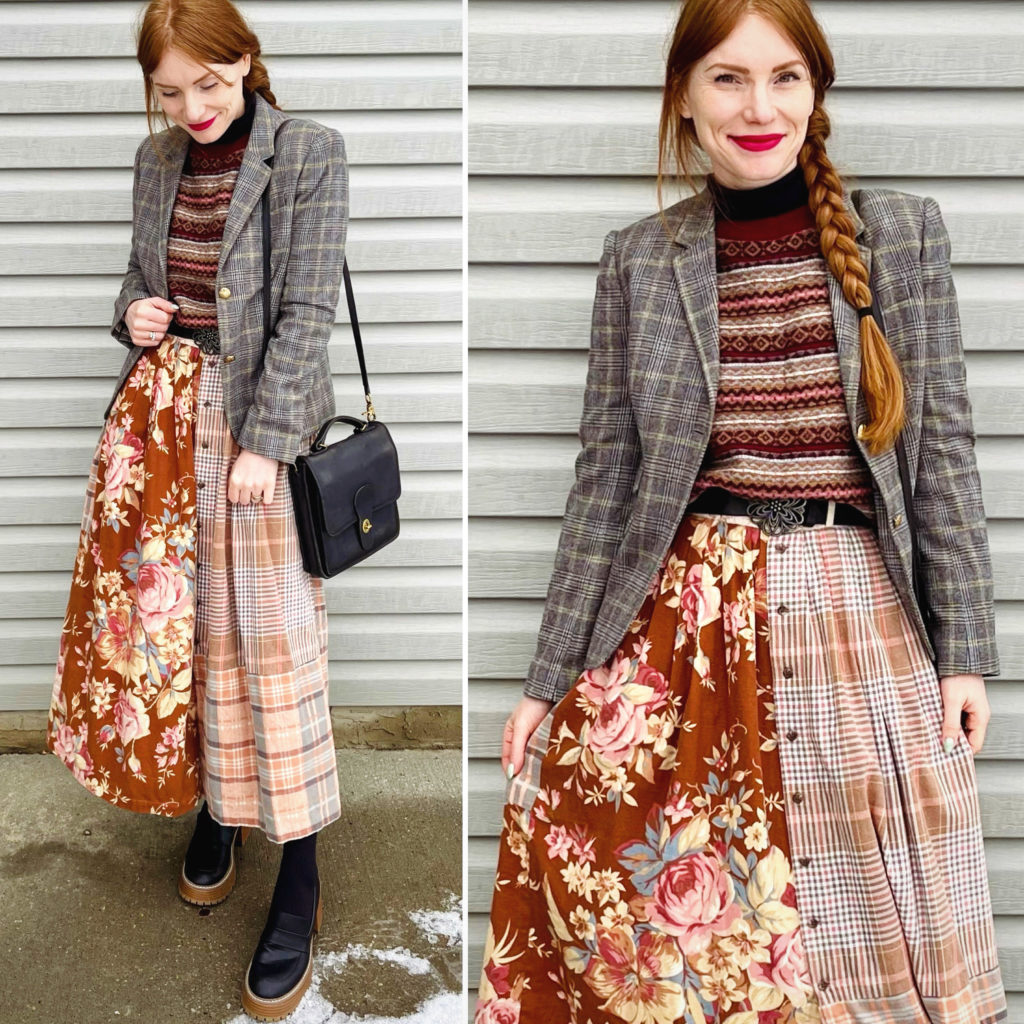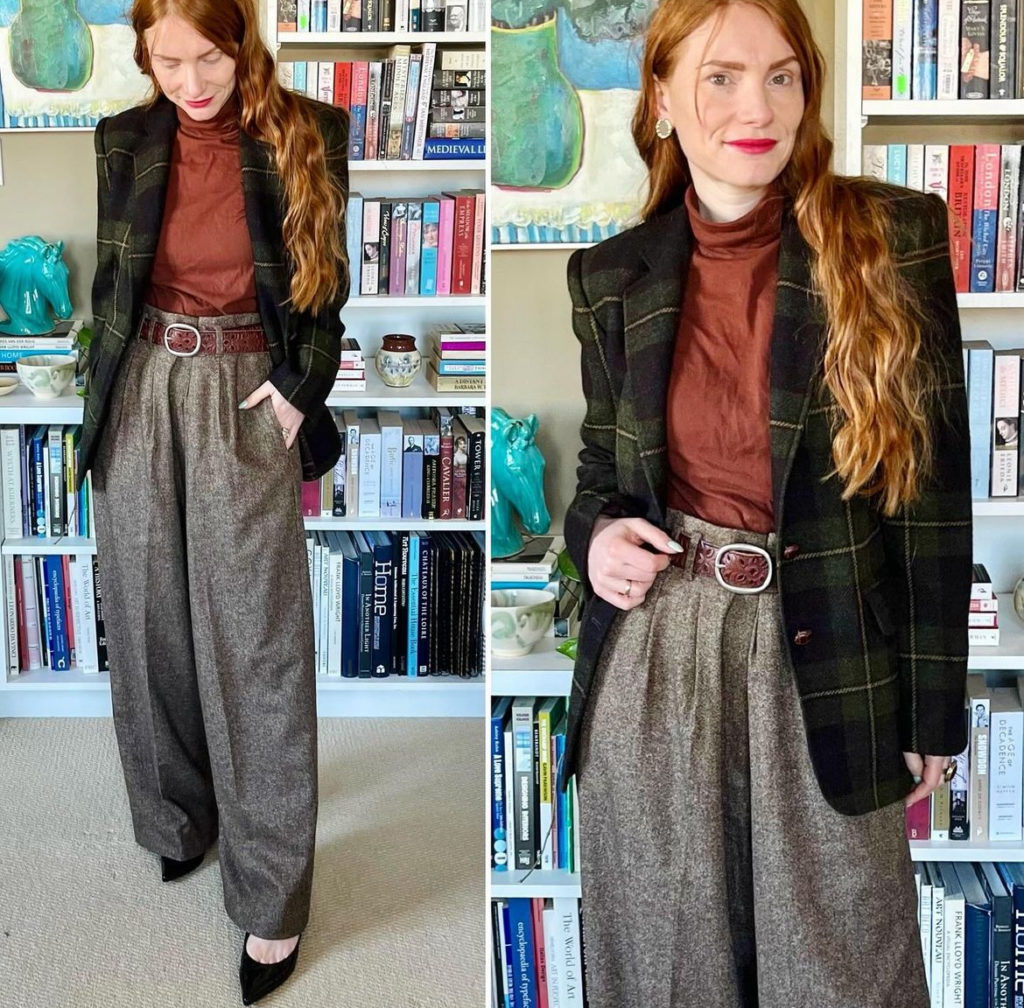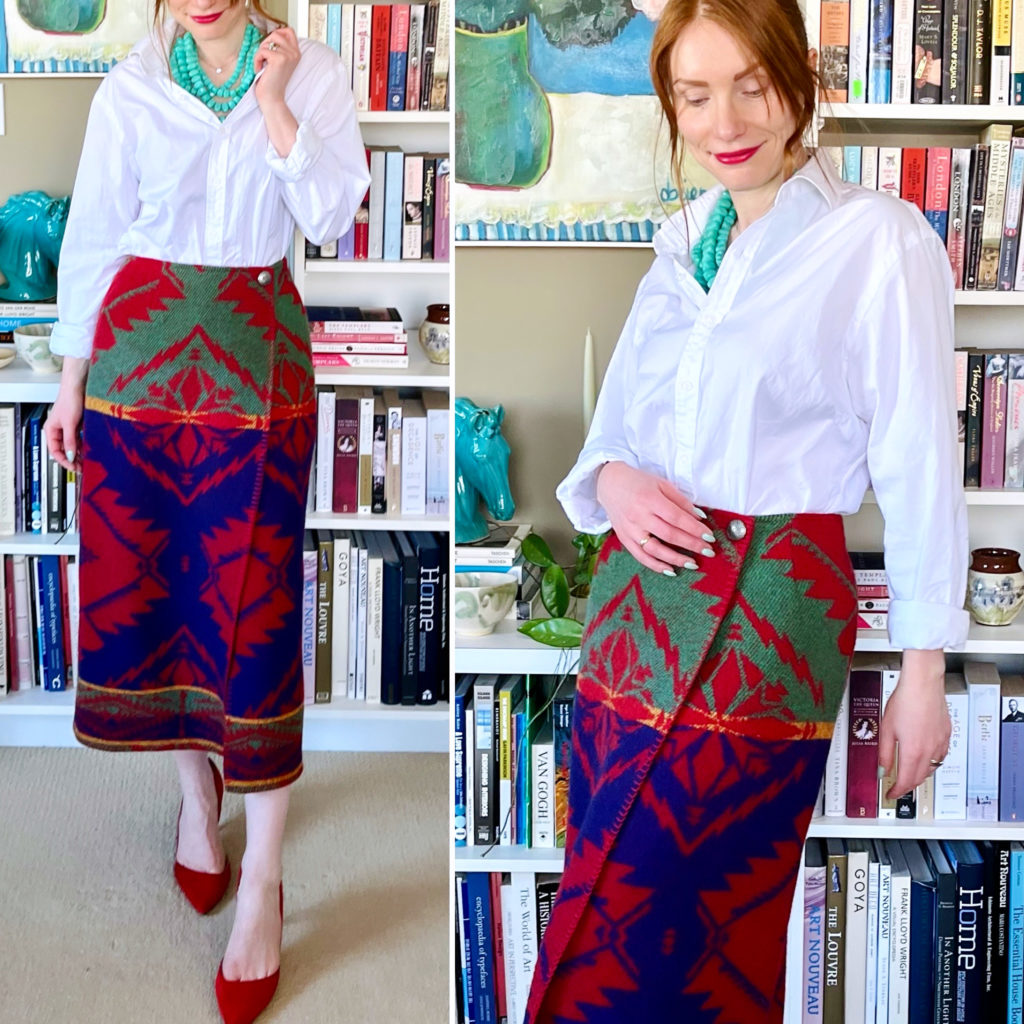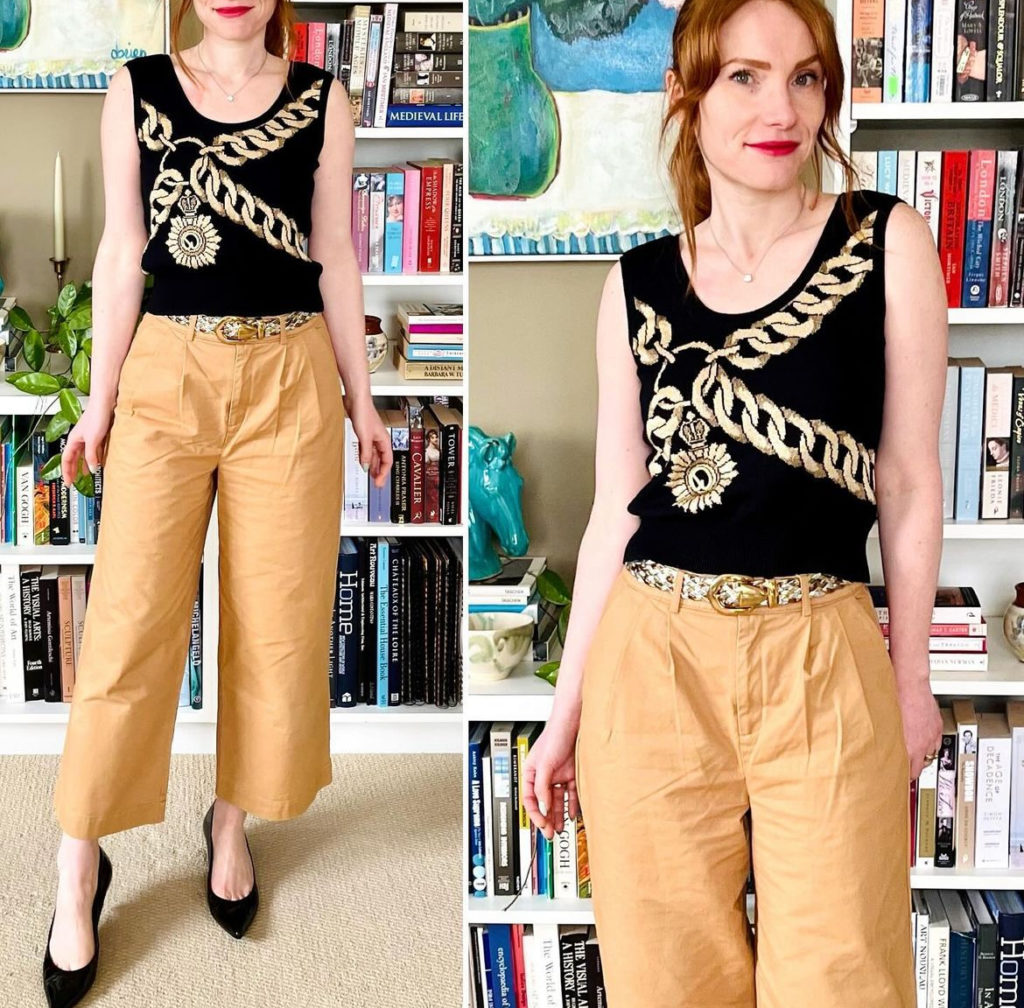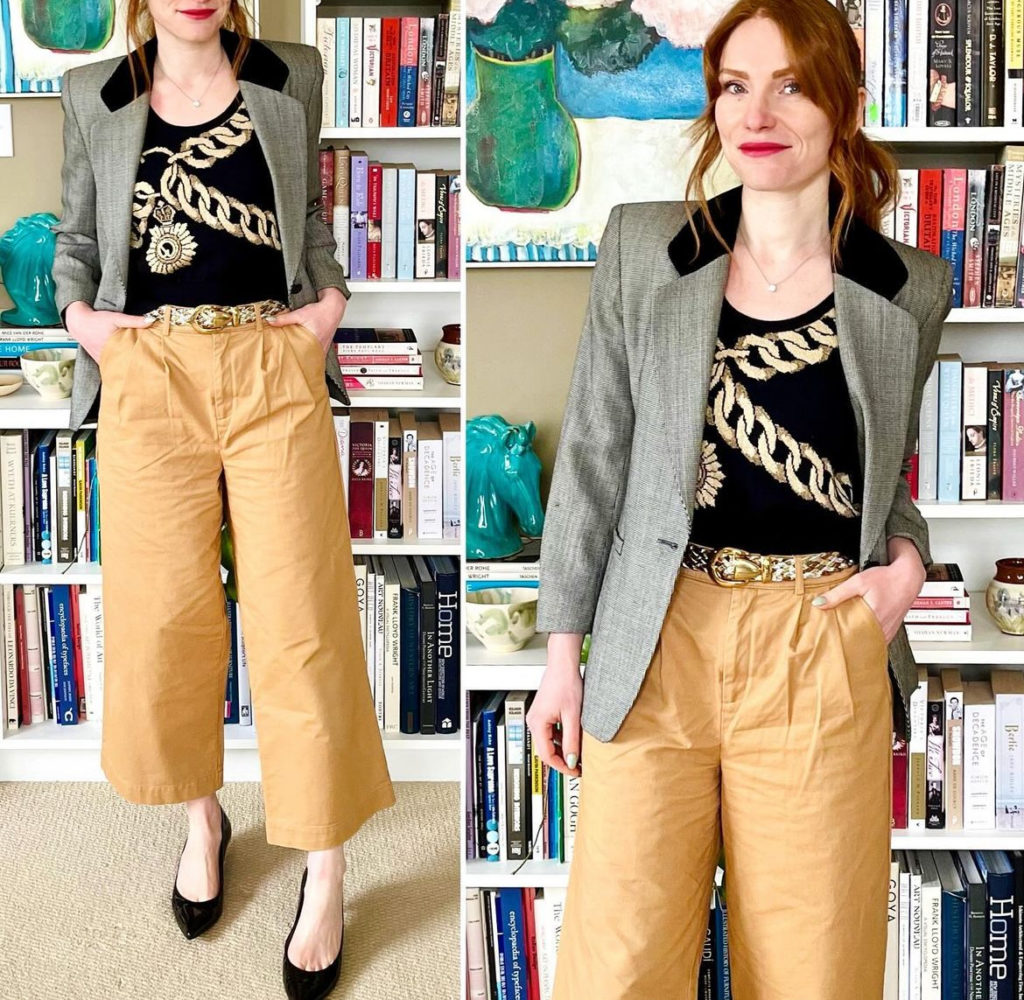While I’ve talked before about my intentional shopping goals for the year, I recently realized that I never really addressed what was on my said intentional shopping list. My closet has been in a very stable state for a while now, which means that my focus, as far as new purchases go, has become quite narrow. For the most part, I have been looking to limit significant purchases to certain key items, and otherwise be quite ruthless about anything else I buy (i.e. at the thrifts). Let’s talk about those key items in more detail, and see how things have been shaping up so far!
There were 3 categories of key items that I singled out at the beginning of the year: 1) vintage Ralph Lauren, 2) vintage Coach bags, and 3) Pendleton blankets. The first category is a catch-all, though my focus remains on consolidating my Ralph “capsule” — i.e. pieces that embody the brand’s ethos through the years. I have a number of specific items in mind, none of which I’ve been able to source yet — either at all, or within my budget. As for “wild cards” in this category, nothing has come up so far; thrift stores have become a poor prospect, and Poshmark these days is both wildly overpriced, and lacking in vintage offerings. So, while this remains an important part of my intentional shopping list, there have been no new additions.
For vintage Coach bags, I had a clear goal: I wanted to add a black bag, a green bag, and an ivory/cream bag. This was based on a number of considerations. One, 90s leather Coach bags are not only wonderful quality, but their aesthetic really suits every facet of my current style. The designs also align with my functional preferences; I like smaller bags that can be worn crossbody. The lack of logos and simplicity of design also suits me perfectly. My rationale for selecting these specific colours was that (a) I didn’t already own Coach bags in those colours (I had brown, mahogany, and red), and (b) they would work well with my wardrobe palette.
The price of 90s Coach bags has gotten quite high lately and, as much as these were a priority for me, there was a ceiling to what I was willing to pay. So patience was the name of the game. After a few months, I was able to find a black Court bag in relatively good condition on Poshmark for about $150CAD all in. It needed a bit of rehabbing, but nothing that a good wash and condition couldn’t fix:

The green bag proved a more difficult quest. I missed out on a great deal early on, before I had acquired enough information to recognize it as such. Green bags are rarer than other colours, and their prices reflect that. I had resigned myself to a very long wait, and then fate intervened. An internet friend reached out, after I posted about my quest on Instagram, and offered her own bag as a gift. She had bought it years before at a charity auction but hadn’t used it, and wanted it to go to a good home where it would be appreciated. Needless to say, I was bowled over by her generosity. The bag is a beauty and her origin story makes her all the more meaningful to me.
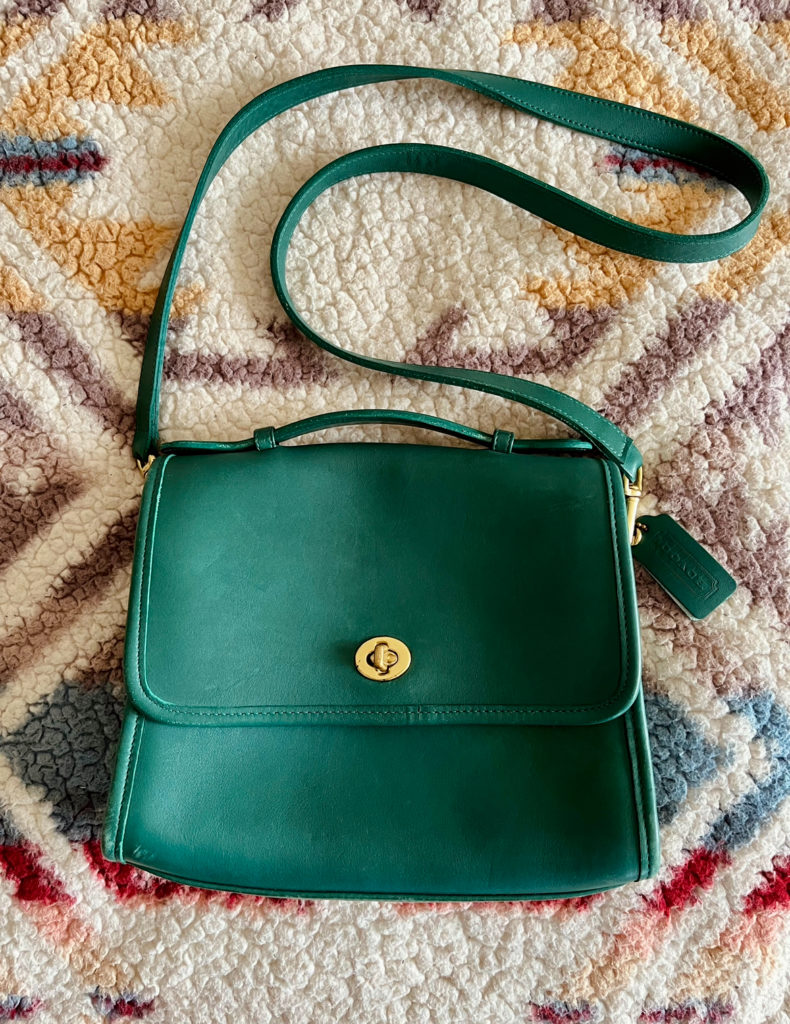
So, at this point, all that remains on my shopping list is an ivory bag, and I am waiting for the right one to cross my path. I briefly borrowed a bone-coloured Coach bag from a friend of mine to test its versatility with my wardrobe; while it was a lovely bag, it made me realize that true ivory (more white than cream) is the best option for me, which helps to narrow down my search.
The last category on my intentional shopping list is, strictly speaking, a different kind of priority than the others, as it isn’t related to my wardrobe at all but, rather, my house. I want to upgrade some of the textiles we have, starting with blankets. And in particular, I have been dreaming of having a couple of Pendleton blankets. Good wool blankets are hard to find at thrift stores these days, much less Pendleton ones, so I had expected to buy these — over a few years — brand new. But then, randomly, the thrift gods smiled on me, and I found one, in excellent condition, at Value Village. Things being what they are these days, it was not cheap by any means ($200). For its condition, and considering the retail price, I felt it was a good deal nonetheless. It’s the Chief Joseph pattern, and I adore it:

I am still planning to buy at least one more Pendleton blanket, but as I have a very specific pattern in mind, I am pretty sure it will be a retail purchase that I will need to plan around the family’s overall budget. It may not end up happening this year, but that’s ok. The anticipation will only make it more special in the end.
Speaking of Pendleton, while this was not on my shopping list, I would be remiss not to mention here the absolutely fabulous vintage wool Pendleton blazer I scored on Poshmark for $35CAD all in:
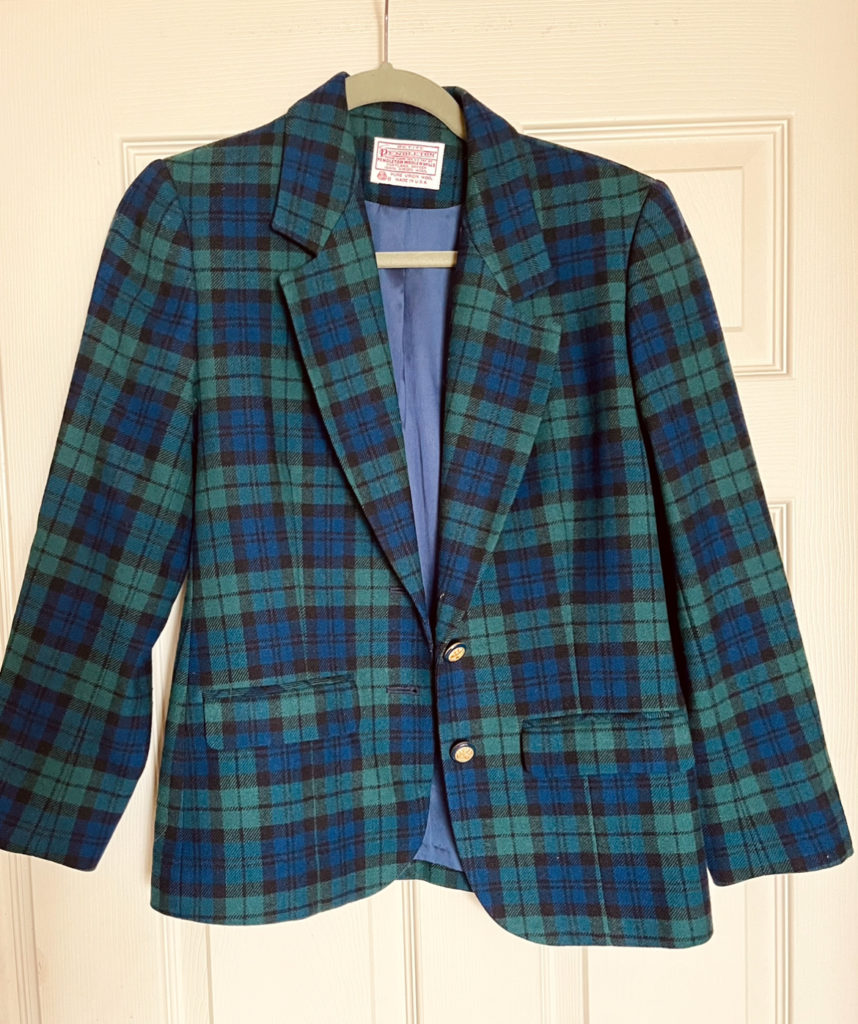
I haven’t been spending much time on Poshmark lately, apart from checking new Coach and RL listings (and perfumes!), but finds like this one are the reason I am not planning to entirely quit browsing the app. Just a real hidden gem. While I wasn’t specifically looking for it, it’s very much my jam — wool plaid blazers have my heart.
The last thing I want to mention is my success in a quest that started almost 2 years ago. Remember my search for the perfect palazzo jean? Yes, I finally found it … at the thrift store, no less:
And with that, my intentional shopping list shrinks down a little bit more. Not coincidentally, my thrifting has recently shifted away from personal clothing purchases; I am now mostly shopping for my (constantly growing) kids and husband — and books!! — and also just buying fewer things in general thanks to the decline in quality I’ve talked about in the past. I will not rehash that conversation here again, but it’s something that’s often on my mind. I’m curious to see how the rest of the year unfolds … in thrifting, and in my intentional shopping project. Stay tuned.

